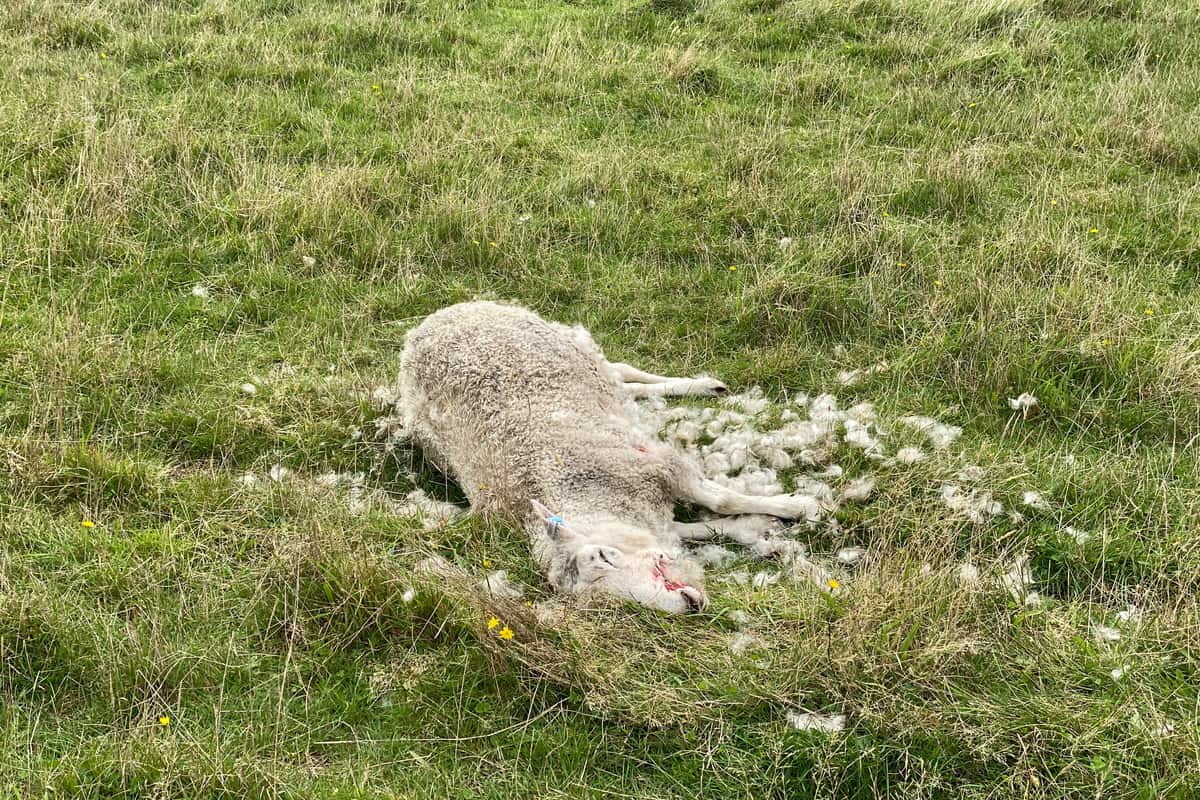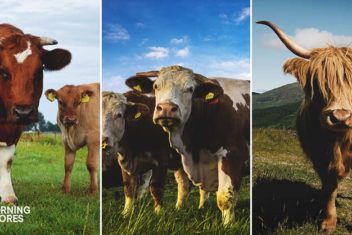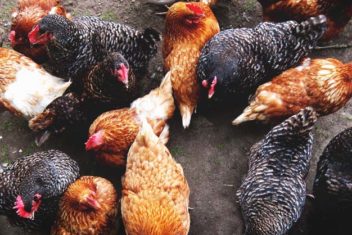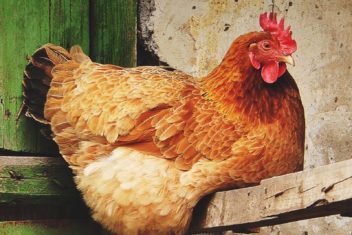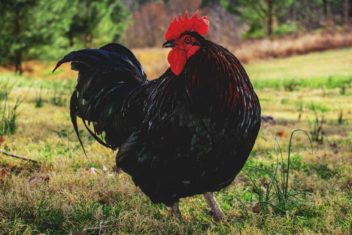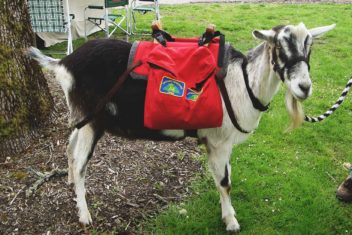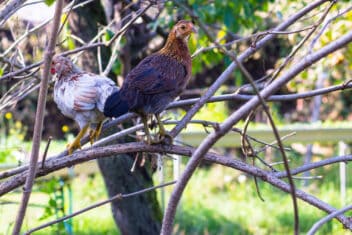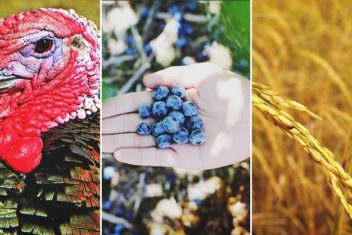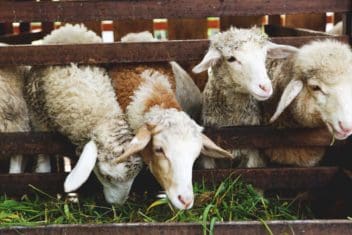My husband and I had always talked about how sad we would be when our favorite breeding sheep, Johanna and Thor, ultimately died of old age.
We never planned to send these two to the slaughterhouse because they were docile, great breeders, and just all-around wonderful sheep to have on the farm.
We knew that the day would come when they would pass. As such, we had a loose plan of how we would handle the disposal of our favorite farm animals if we found one of them dead in the pasture one day.
What we didn’t expect was that we would have to deal with this issue far sooner than we thought. However, it was not with those two particular individuals.
Last fall, one of our younger ewes fell on some ice and injured her leg.
After too much time spent trying to get her up, trying to get her to eat, and giving her all the right medical attention, we finally had to give up.
The problem then arose of what we were supposed to do with the body. Fortunately, this ewe was young enough that processing her and eating the meat was an option. Had she been older or sick with some mysterious disease, we wouldn’t have felt comfortable doing so.
While most people assume that farm animals can just be eaten when they die, that’s not always the case. Often, animals die unexpectedly and a farmer is left in a rather tricky situation. It can be quite difficult to figure out what to do with a farm animal when it has passed on.
Here is some advice on the disposal of farm animals you can follow if you ever find yourself in this situation.
Initial Steps to Take
If an animal dies unexpectedly on your farm, the first and single most important thing you should do is to figure out the cause of death.
In some cases, it might be obvious – we knew that our ewe had fallen and injured herself.
However, it is very common for animals to die in more mysterious ways – especially sheep. Sheep are notorious for being seemingly healthy one day, then dead the next. Often, this is because of a disease or parasites.
Figuring out the cause of death is important because it will determine whether you can safely eat the meat. If you can, this will solve many of the problems related to getting rid of the body.
Whether an injury, or an animal making poor decisions like getting its head stuck in a fence or feeder, you can usually rule out the cause of death pretty quickly.
However, if the cause of death is not known (possibly due to a transmissible disease), then you’ll need to take additional steps.
It’s a good idea to get in touch with a vet. This is doubly true if you suspect a disease or aren’t sure what killed the animal. They can do testing to rule out various factors.
Not only that, but figuring out the cause of death is important when it comes to your remaining animals. If the animal died from a disease or heavy parasite loads, you’ll need to medicate, deworm, and quarantine your herd. Being able to pinpoint exactly what killed your animal is vital.
Farm Animal Disposal
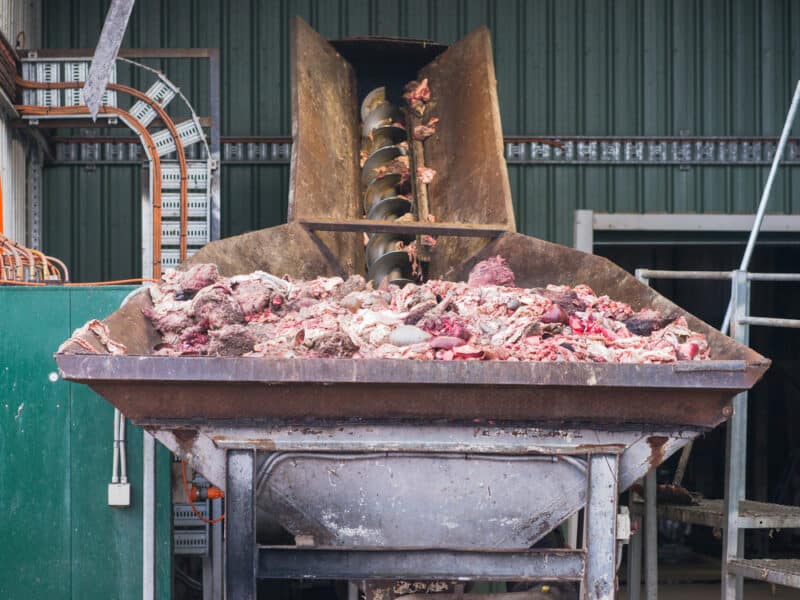
Once you know what killed your animal, the next question is – what should you do with it?
You have a few options.
1. Can You Eat It?
Obviously, the least wasteful option, if it is an option for you, is to eat the animal that has died.
There are, however, many situations in which this is impractical. If your animal died from diseases or parasites, eating it is probably not a great idea.
Also, eating the animal is really only an option if you euthanized it. It might also work if you found it pretty much immediately after it died.
It’s not a good idea to eat an animal that’s been lying dead in the pasture for the last 6 hours.
Eating the animal is the best option on this list in terms of reducing waste. However, it might not be the easiest to accomplish when it comes to logistics.
2. Rendering
There are rendering plants all over the country that take in farm animal carcasses.
These plants reduce materials from slaughterhouses, meat packing castoffs, and farms. They process them down into proteins, fats, and oils that are used in things like livestock feed, pet food, paints, and cosmetics.
If you have a rendering plant near you, taking the carcass there is a great idea.
You will have to pay to have the animal taken away but you can search online for facilities in your area.
3. Composting
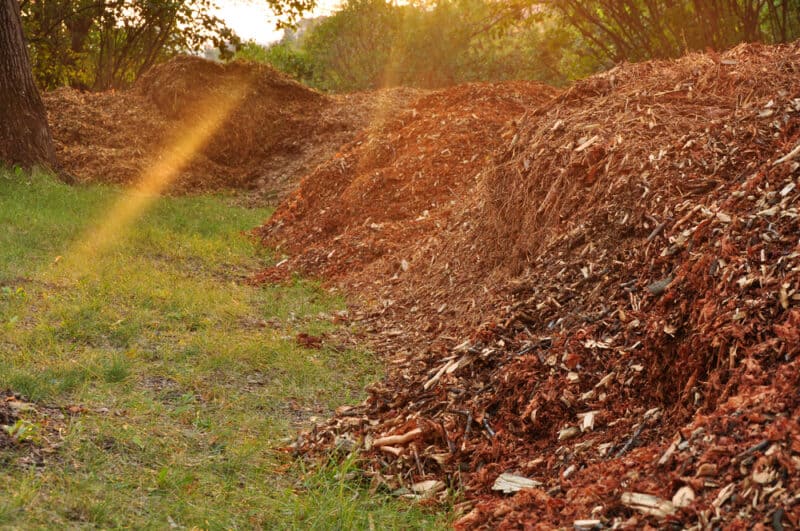
Composting a dead farm animal is one of the best solutions for dealing with the carcass. It also lets you make the most of the nutrients that are left behind.
It doesn’t take a lot of space, time, or effort, but you will need to do some thinking and planning ahead.
For the body of a large farm animal to break down readily in a compost pile, that compost pile needs to be hot. There needs to be plenty of microbes there to break down the carcass for you.
Not only that, but even in a very hot compost pile, you may need to lay down several inches of sawdust. This should be done above and beneath the carcass to prevent it from developing a stench.
You’ll need a way to get the animal into the compost, too (like a loader).
If you simply throw the carcass on top of the compost pile, you’re probably not going to like the results.
However, if you’re able to compost the body effectively, you’ll be rewarded with nutrient-rich compost that can then go back to the land. It’s a win-win in that you’ll be able to dispose of the body and get some bonus fertilizer, too.
4. Burying
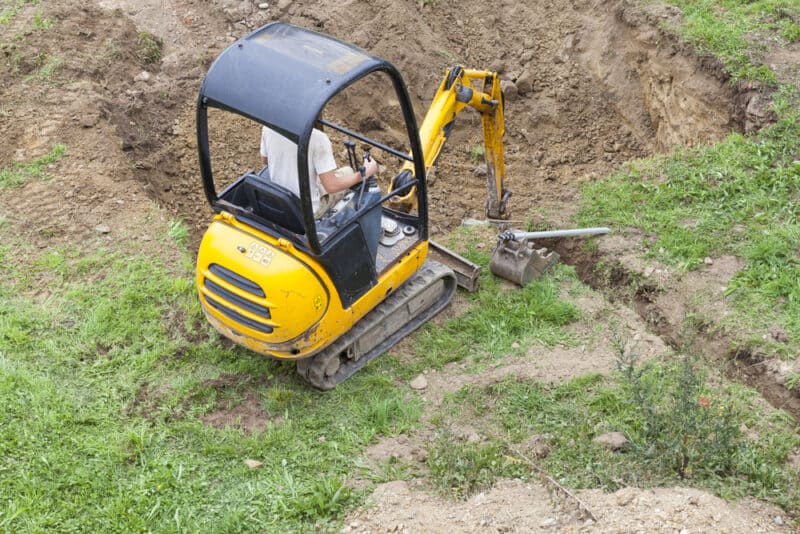
Burying farm animals is another common option for disposal but again, it won’t work for everyone.
You will need to bury it in an appropriate location and at the proper depth so it won’t contaminate the local water table.
The issue with burying a carcass super deep is that it will be so far down in the ground that soil microbes won’t be able to take advantage of it. It will lock up the nutrient potential of the carcass and not do your farm much good.
That said, if your only goal is to get rid of the carcass instead of making the best possible use of it, this shouldn’t be an issue.
The only other problem associated with burying a carcass is the time and labor involved. Unless you have a machine that’s going to do a bulk of the hard digging for you, this is going to be challenging.
Digging a large and deep enough hole to bury a farm animal is going to require a fair amount of backbreaking work.
That’s especially true if you have stony soil!
5. Burning
In some cases, you may be able to burn a carcass, but this isn’t something I would recommend. The smell is going to be less than desirable.
Also, most places have restrictions in place in terms of what you can burn. You also need to find out what you should do with the remaining pile of debris.
Ask your vet if she thinks this is a good idea.
You’ll also need to make sure your animal didn’t die of something that could infect other animals, as burning doesn’t eliminate those risks.
Are There Any Other Options?
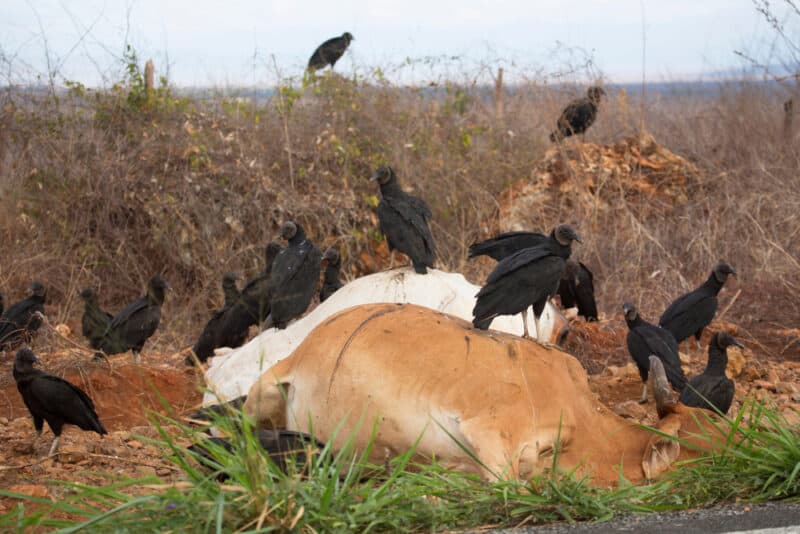
When it comes to the disposal of farm animals, the choices I’ve told you about above are probably your best bets.
However, there are plenty of other alternatives – some people leave dead farm animal carcasses to feed wildlife.
The big problem with this, of course, is that you need a substantial amount of property so you aren’t inviting predators and pests right up close to your home and farm.
Some people use dead carcasses to produce food for animals like fish and chickens.
The most common method of doing this is suspending the carcass or part of the carcasses in the air with a mesh cage.
Chickens can peck at the carcass as it rots, and they’ll also be able to eat maggots as flies lay their eggs there.
The most obvious issue with this is, well, it’s kind of disgusting! Plus, if all the maggots aren’t eaten, they’ll turn into flies – that can create another problem for your farm entirely.
You can even cut up a carcass and feed the meat to your dog. If you’ve used any kind of medication, if the animal is diseased, or the carcass smells, then this isn’t a good idea.
Ultimately, you have plenty of choices in how you decide to handle the disposal of a farm animal that died prematurely.
Consider the best option for you by weighing factors such as how the animal died, how long ago it died, and what kind of resources you have at your disposal. You’re sure to find the right solution in no time!
